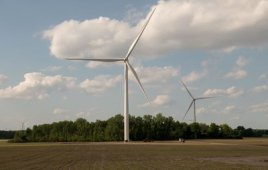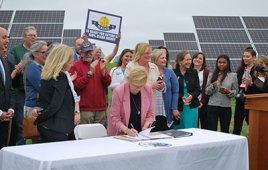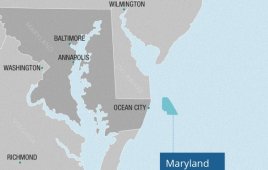Editor’s note: This article comes from the American Wind Energy Association’s (AWEA) blog, Into the Wind. It was written by Molly Seltzer, a George Washington University Shapiro Traveling Fellow. Her photojournalistic project, Electric America, documents the American energy landscape.

Along with keeping clocks on time, the benefits to Block Island of the offshore wind farm included construction and wind farm maintenance jobs, national and international attention, and an electrical connection to Rhode Island.
Life on Block Island runs a couple of minutes slower than on the mainland. But “island time” does not refer to the leisurely pace of the island lifestyle, but rather to the quality of the electricity – the clocks literally run slow.
For 92 years, the island ran on electricity made from diesel fuel. While household appliances are designed to run on electricity at a frequency of 60 hertz (hz), the Block Island Power Company’s (BIPCO) diesel generators were not equipped to manage and equate load and generation with the precision of mainland grid operators. This means that the island’s power routinely ran between 59 hz and 61 hz, or a range even more dramatic than that.
The result was electric clocks that could not keep time, and appliances that wore out years ahead of schedule because of Block Island’s poor “quality” electricity.
For this reason, Block Island is one of the few places in the country where people not only notice the quality, reliability and source of their electricity supply, but they care about it. It directly impacts their businesses, costs and schedules.
Most residents had switched to battery operated clocks, and saw replacing broken appliances, ruined by the 59 hz electricity, as an unavoidable expense. It was simply part of life and part of running a business on the island.
Until they turned to wind power.
WHAT WIND POWER MEANS FOR BLOCK ISLAND LOCALS
On May 1, 2017 Block Island began running on wind power supplied by Deepwater Wind’s Block Island Wind Farm, comprised of five large turbines that sit three miles off the island’s coast.
It was a historic moment for residents and for Block Island Power Company, which officially shut down its diesel generators and began receiving power from the turbines.
All of the wind power flows to the substation at Block Island, and Block Island takes the first cut of the freshly made wind power. From there, whatever amount of power is not needed by the island at that time gets sent to the mainland. If the turbines are not producing enough electricity to meet island demand, Block Island receives mainland power from the grid via an underwater Sea2Shore cable, a key benefit of the project.
One important effect of the new power source is the time. The first thing Judy Gray, a former meteorologist for NOAA and longtime Block Island resident, noticed was the steadiness in electricity supply.
“Our clocks haven’t changed! I set it one minute slow and it was one minute slow a week later. I couldn’t believe it,” she exclaimed excitedly.
“The fact that we’re getting good power has not really been brought up,” said Judy’s partner Jules Craynock, also a former NOAA scientist. Prior to the island’s switch to wind power, Jules had recently replaced a new dishwasher that had been used less than 100 times, which he suspects was a casualty of the island’s poor quality of electricity—a familiar experience for many residents.
Most local islanders recognize the value of getting off of diesel. One of the diesel generators caught fire last year and that cost was passed along to ratepayers. Along with the danger and pollution of diesel, the cost of electricity for residents was directly tied to the world oil market. Impacts to supply abroad and spikes in world demand meant high prices on the island.
el every year,” says Jeffrey Wright, CEO of Block Island Power Company. In January 2014, the fuel cost reached a height of $.35/kilowatt hour (kWh), which reflected the cost of diesel alone and did not include transmission and distribution charges.
That’s almost triple the national residential average of about $.13/kWh. Gross electricity cost could be as high as 60 cents per kilowatt hour on Block Island.
Filed Under: Uncategorized




